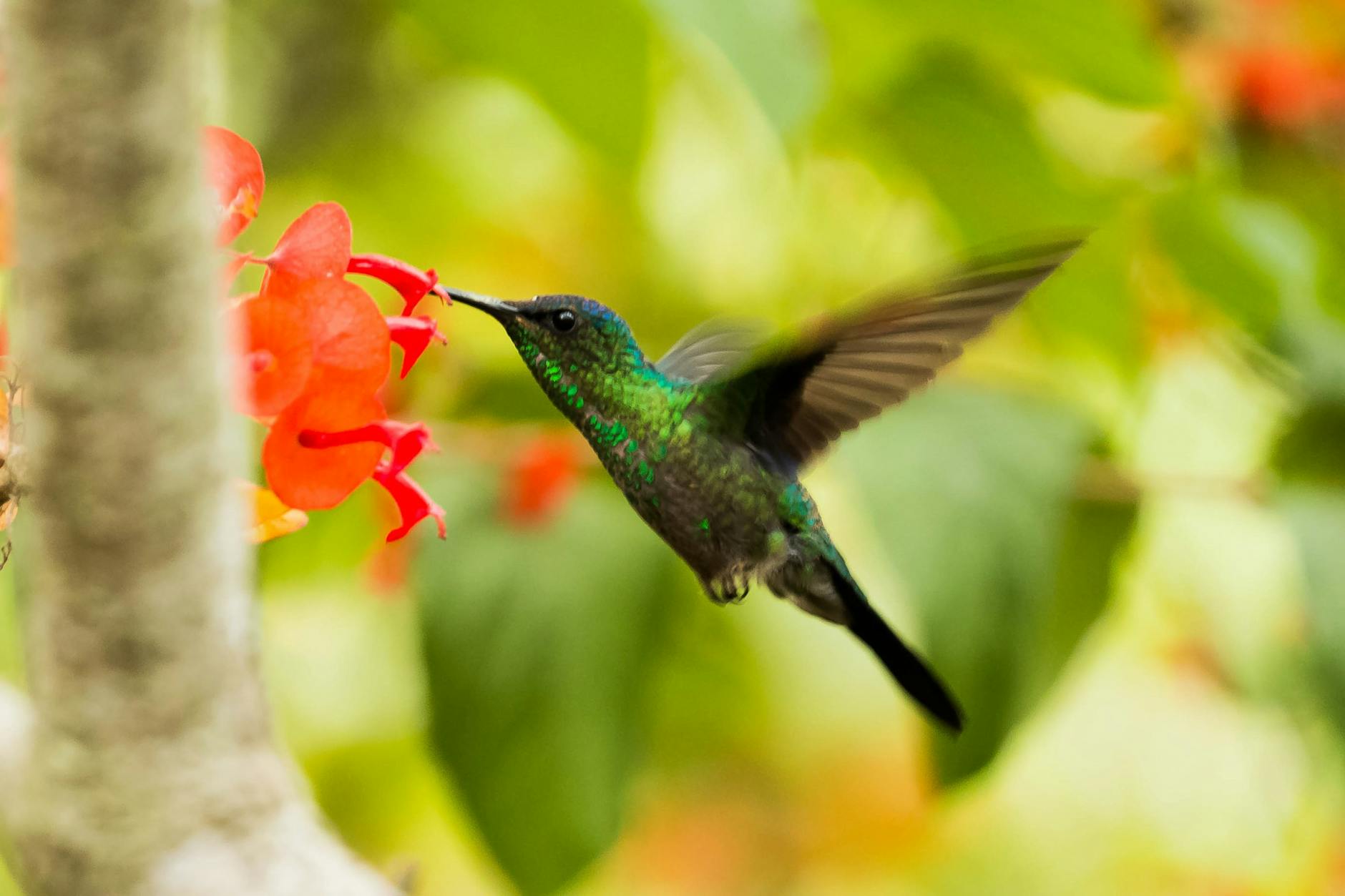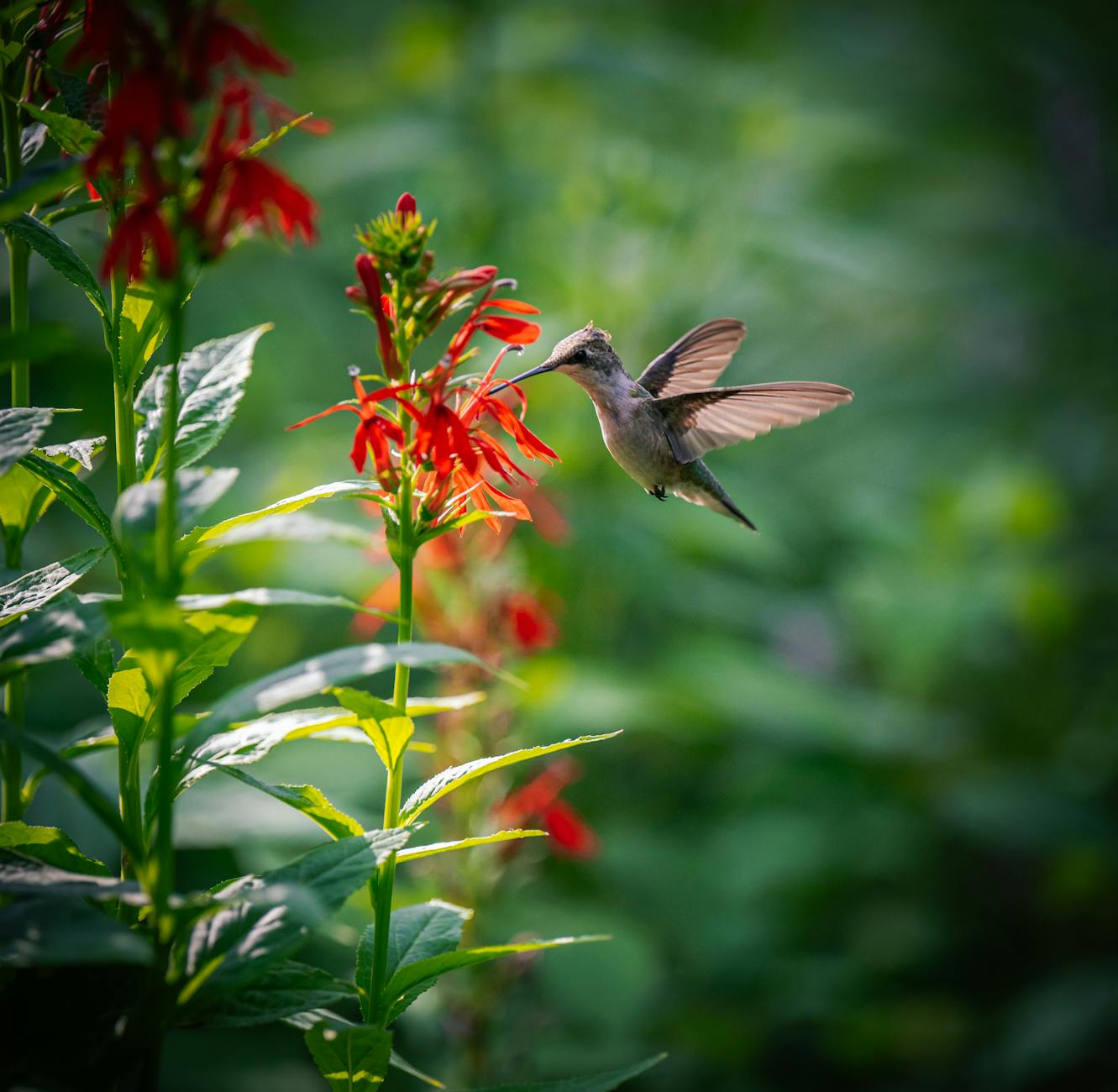How to Create the Perfect Hummingbird Garden: Plants, Features, and Tips for Success
Imagine stepping into your garden and hearing the soft hum of tiny wings. Hummingbirds, with their vibrant colors and quick movements, bring life to any outdoor space. Creating a space that attracts these fascinating creatures isn’t just easy—it’s rewarding. The right plants, water features, and thoughtful design can transform your garden into a haven for these pollinators. Whether you’re a seasoned gardener or just starting out, a hummingbird-friendly garden adds beauty and helps sustain local wildlife. Let’s make your garden irresistible to nature’s most charming visitors.
Choosing the Right Plants
When creating a hummingbird-friendly garden, thoughtful plant selection is essential. Plants not only provide nourishment for these enchanting birds, but their colors and scents also lure them in. Knowing which plants to choose can make your garden the go-to spot for hummingbirds in the neighborhood.
Best Flower Types
Hummingbirds are naturally drawn to flowers with tubular shapes and bright colors, particularly red, pink, and orange. These flowers are perfect for their long, slender beaks and provide easy access to nectar. Consider planting these popular hummingbird favorites:
- Bee Balm
- Trumpet Vine
- Fuchsia
- Salvia
- Coral Honeysuckle
Each of these plants is rich in nectar and beloved by hummingbirds. You can enhance your garden’s appeal even further by grouping these flowers in clusters. Learn more about specific flowers here.

Photo by Mike Knibbs
Native Plants
Native plants are an excellent choice for attracting hummingbirds. Why? They’re perfectly adapted to your local climate, soil, and wildlife, meaning they often require less maintenance and naturally appeal to local hummingbirds. Here are some great options for native flowering plants:
- Indian Pink (Spigelia marilandica)
- Royal Catchfly (Silene regia)
- Yellow Honeysuckle (Lonicera flava)
- California Fuchsia (Epilobium canum)
- Trumpet Creeper (Campsis radicans)
Using native plants also supports the broader ecosystem in your area, benefiting not only hummingbirds but also other pollinators. Discover more about native plant options here.
Seasonal Blooms
Hummingbirds migrate and need food sources throughout their travels. To keep them coming back, ensure your garden has plants that bloom in different seasons. Here’s a guide to seasonal blooms:
- Spring: Columbine, Bleeding Heart
- Summer: Bee Balm, Crocosmia
- Fall: Cardinal Flower, Mexican Sunflower
This approach ensures that your garden is a reliable source of nectar no matter the season. You can find additional ideas for multi-season planting here. By planning for all seasons, you’ll not only keep hummingbirds fed but ensure your garden stays lively and colorful year-round.
Creating a Welcoming Environment
Making your garden a haven for hummingbirds starts with more than just beautiful flowers. It’s about creating a space that provides food, water, shelter, and places to rest. A hummingbird-friendly garden is like a hotel for these little guests; they’ll stay longer if all their needs are covered. Let’s explore how you can make your garden irresistible.
Water Sources
Hummingbirds may not drink water the way larger birds do, but they adore shallow, moving water for bathing and cooling off. Typical bird baths are often too deep, so opt for features tailored to their size:
- Misting Stations: Hummingbirds love the sensation of mist and may hover in it to cool down.
- Shallow Bird Baths: Choose baths no deeper than an inch and ideally install those with textured surfaces for better grip.
- Small Fountains: A gentle trickle or drip can help attract hummingbirds without overwhelming them.
Adding water also enhances your garden visually with the soothing sound of flowing water. To learn how to attract hummingbirds with water features, see this guide.

Photo by Chris F
Shelter and Nesting Areas
Providing safety and nesting opportunities ensures hummingbirds feel secure in your garden. Since they’re more vulnerable to predators, creating cleverly concealed spots shields them from harm. Here are some practical ideas:
- Dense Shrubs and Bushes: Plant shrubs like azaleas or hawthorns, which offer plenty of cover and deterrence against predators.
- Trellises with Vines: Install trellises and grow durable, flowering vines like clematis to act as both nectar sources and hidden shelters.
- Trees: Hummingbirds prefer softwood trees or smaller ones with low-hanging branches that are easy to perch on for nesting.
Some plants provide materials hummingbirds use for nest-building, such as soft fibers or moss. Explore more tips on how to create safe habitats here.
Perches for Resting
Hummingbirds expend enormous energy while zipping around, and they need spots to rest and recharge. Adding natural perches provides them with vantage points to survey the area while staying still. Here’s how to incorporate them into your garden:
- Tall Plants: Plants like mullein or sunflowers offer an excellent place to perch.
- Small Twigs or Decorative Perches: Consider installing minimalist, branch-like perches in open spaces for easy access.
- Strategic Grouping: Arrange your taller plants at the garden’s edges or center to give hummingbirds a bird’s-eye view.
To understand more about why resting spots matter, check out these ideas.
By implementing these features, your garden will go beyond being a food stop—it will become a hummingbird sanctuary.
Maintaining Your Hummingbird Garden
Creating a hummingbird-friendly garden is just the beginning. To keep it thriving and inviting for these tiny visitors, you’ll need to maintain it with care. Regular attention to your garden ensures that it stays lush, vibrant, and safe for hummingbirds. Let’s focus on key practices that will help you sustain this lively oasis.
Organic Gardening Practices
Hummingbirds are sensitive creatures, and harsh chemicals can harm them and disrupt your garden’s ecosystem. Going organic is the best way to keep your garden both safe and sustainable.
Consider these organic pest control methods:
- Introduce Beneficial Insects: Ladybugs, lacewings, and praying mantises naturally control pests like aphids and whiteflies.
- Companion Planting: Certain plants, like marigolds or basil, repel harmful insects while attracting pollinators.
- Homemade Pest Sprays: Use mild solutions like neem oil or garlic spray to deter unwanted bugs without causing harm.
These methods not only protect hummingbirds but also improve soil quality and overall plant health. Explore more strategies for organic pest control in this detailed guide.

Photo by Djalma Paiva Armelin
Regular Maintenance
To make your garden a long-term haven for hummingbirds, regular upkeep is crucial. Simple tasks can go a long way in keeping plants healthy and your garden inviting.
Here’s what to focus on:
- Deadhead Spent Flowers: Removing faded blooms encourages plants to produce more flowers, providing continuous nectar sources for hummingbirds. Learn why deadheading is essential here.
- Keep Water Clean: If you have fountains, misters, or bird baths, rinse them out regularly to prevent algae and bacteria from forming. Clean water ensures hummingbirds have a safe spot to cool off and bathe.
- Prune and Weed: Trim overgrown plants and remove invasive weeds to give your garden a tidy, welcoming look. This creates a better space for both birds and plants to thrive.
Routine maintenance not only keeps your garden attractive but also ensures it remains a safe and nourishing environment for hummingbirds. For additional tips on deadheading flowers, check out this helpful resource.
By integrating these practices, your hummingbird-friendly garden will not only survive but flourish, continuing to attract these delightful creatures season after season.
Bonus Tips for Success
Crafting the perfect hummingbird-friendly garden is an art. Every detail, from plant selection to garden layout, can play a role in attracting these delightful creatures. To optimize your garden’s appeal, these bonus tips will help you take it to the next level.
Planting in Clusters
Why do hummingbirds adore clusters? Simply put, grouping plants together makes their search for nectar easier and more rewarding. When flowers are close together, hummingbirds can efficiently move from one bloom to the next without expending too much energy.
- Efficiency in Feeding: Since hummingbirds burn a lot of calories, clusters provide a high nectar return with less effort.
- Visual Impact: Large, clustered blooms are easier for hummingbirds to spot as they zip around in search of food.
- Natural Appeal: Clusters mimic the way flowers grow in the wild, making your garden more inviting and familiar to wildlife.
Plants like bee balm, salvia, or trumpet vine thrive when grouped together in clumps of three or more. Want more insights into the benefits of clustering plants? Check out this resource.
Color Choices
Ever notice how hummingbirds are drawn to bold, bright hues? Their vision is highly attuned to colors, with red being their absolute favorite. But don’t stop there—mix in other vibrant shades like pink, orange, and yellow to create a visually stunning garden.
- Red Rules: Plants like red canna lilies or coral honeysuckle act as beacons for hungry hummingbirds.
- Mix It Up: While red dominates, shades of pink and orange provide variety that keeps visitors coming back.
- Strategic Placement: Position brightly colored plants near shaded areas to enhance their visibility.
Adding color is like putting up a giant “welcome sign” for hummingbirds. For more ideas on choosing the right colors for your garden, explore this guide.

Photo by Chris F
By focusing on plant clusters and bold colors, you’ll draw in hummingbirds and create a garden that’s both functional and beautiful.
Conclusion
A garden designed for hummingbirds is more than just a visual treat—it’s a celebration of life and nature. By choosing the right plants, integrating water features, and creating safe shelters, you offer a sanctuary that supports these tiny, vibrant creatures.
Your efforts not only attract hummingbirds but also promote biodiversity, enriching your outdoor space. A thriving garden like this becomes a peaceful escape for you and an essential pit stop for pollinators.
Ready to get started? Share your garden photos, and tell us how you’re welcoming hummingbirds!










